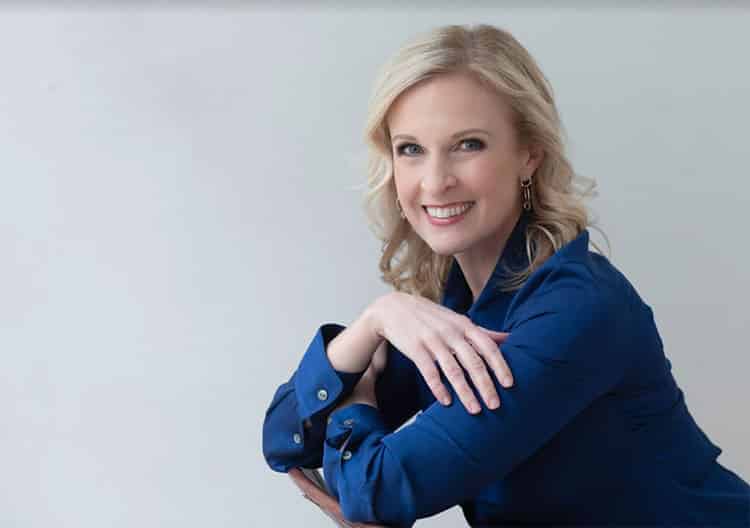An Executive Roadmap to Inclusive Leadership

For corporate leaders intent on learning as much as possible, from thought leadership and research about the more pressing issues facing organizations today, the intensifying conversation around diversity and inclusion (D&I) initiatives is becoming impossible to ignore. In the age of social media and viral content, corporations that misstep are inevitably held accountable—not only internally, but in full view of the public, which can lead to real consequences beyond a PR disaster and bottom line impact. Further, millennials are the largest generation in the U.S. labor force, according to a Pew Research Center analysis of U.S. Census Bureau data, and as a generation they overwhelmingly prefer diverse and inclusive workplaces. Companies that want to attract the best talent, gain a competitive advantage or hold on to the one they have, and lead the charge with innovation, have no choice but to respond to this demand.
In a landmark 2018 study Delivering Through Diversity, McKinsey states that, “There is a penalty for opting out.” Overall, companies in the bottom quartile for both gender and ethnic or cultural diversity are 29% less likely to achieve above-average profitability than all other companies. When you consider that, inclusive leadership no longer seems like an abstract concept, but something that is vital to achieving or maintaining a competitive advantage.
Over more than a decade of working in the diversity and inclusion space, my team and I have seen firsthand that the best indicator for whether a D&I initiative will succeed is the buy-in of individuals in the C-suite. Yet those who make it to the top of successful companies tend to be overwhelmingly white, male, and heterosexual. For someone who has never experienced adversity because of their race, gender or sexuality, it can be difficult to understand what role one needs to play in providing disadvantaged groups equal access to work or opportunities.
However distant D&I concepts might feel from your own experiences, you nevertheless harbor within yourself the power to be proactive, and to tap into whatever resources you need to educate yourself, so you can activate on behalf of others and remain competitive as an organization. In the last few years, studies like the aforementioned from McKinsey on the efficacy of corporate D&I initiatives have demonstrated that these types of initiatives not only pay off in terms of increased ROI, but also help hit other benchmarks like lower attrition rates and higher productivity.
The good news is that it is never too late to build your awareness and come to a better understanding of what it means to not only diversify your hiring pipeline, but create cultures of belonging where everyone feels supported. Far from the compliance-motivated diversity trainings of old, D&I can open up new horizons within your leadership that can have wide-reaching positive impacts for your organization.
The question then becomes where, and how, to begin. The Inclusive Leader Continuum that I share in my new book, How to Be an Inclusive Leader: Your Role in Creating Cultures of Belonging Where Everyone Can Thrive, not only illustrates where you stand relative to your peers when it comes to your understanding of D&I, but also offers a roadmap to help you identify your next steps.
No matter where you find yourself on the continuum, remember you are not alone, but rather with thousands of others all over the world who are thinking about these issues, many for the first time. The more honest you can be with yourself about where you are currently in your journey, the greater success you’ll find in any corporate D&I initiative you undertake.
The Inclusive Leader Continuum is broken down into four stages:
- Unaware: Someone who is unaware usually believes that diversity is compliance-related and not something that correlates to value creation or ROI. If they begin any diversity initiatives, they may be motivated for legal reasons, to please their board (who may also themselves be unaware), or to do damage control. If you think you could be in this stage, it may be uncomfortable to admit, but rather than thinking about all the ways in which you feel like you’re already doing enough when it comes to D&I, try asking yourself some tough questions about why your go-to response is to defend the work you’re already doing, rather than to push yourself further to figure out how you could be doing more.
- Aware: Someone who is aware understands that they have a role to play and are educating themselves about how best to move forward. The key to this stage is learning to listen to those around you who you are perhaps less familiar with, or from whom you hear less often, even (or perhaps especially) when it comes to hearing things that might make you feel uncomfortable, such as feedback about how you might change what you think, say and do, or the corporate culture you’re responsible for, to make the space safer or better for diverse individuals. You know you’re in this stage when you’re regularly educating yourself about what you don’t know and noticing how you might incorporate any newfound awareness into how you interact with others in the workplace. Employee Resource Groups (ERGs) can be deep wells of knowledge that can make an outsized difference in helping you learn how to activate on behalf of others.
- Active: Someone who is active has shifted their priorities and is finding their voice as they begin to take meaningful action to support others. Up until this stage, an individual is learning through introspection and actively listening to and learning from others. In this stage, you have the opportunity to act on some of that newfound knowledge—and a powerful way to do that is through amplification—using one’s voice to make space for and support voices that are not heard as often. One way to leave behind old behaviors for new ones here is to provide active mentorship to individuals—whether within, or beyond, your organization—who don’t have people advocating for them at the top of the ladder. Another example is to make a point of supporting points made by people whose voices often get lost in the shuffle in meetings. Regardless, getting feedback on when you are succeeding, and how you can improve, is of the utmost importance at this stage.
- Advocate: An advocate is someone who is constantly and proactively confronting discrimination and working to bring about change in order to prevent discrimination on a systemic level. The critical internal shift is from efforts towards inclusivity, to an integrated sense of compassion. Often, but not always, this comes about from personal experience learning of discrimination, or witnessing that faced by someone else. As a leader, your advocacy can take a wide range of forms but at this stage indicates that you are proactively working to change the status quo.
Those of us in leadership roles are in a unique position relative to the rest of the workforce. We know the challenges of undertaking any new initiative—and that its success hinges on the admission that neither we, nor our organizations, are perfect; it also hinges on our willingness to push ourselves and others forward.
No matter how hard we try, we harbor unconscious biases that impact whether or not those around us feel welcomed, valued, respected and heard. That’s why inclusion must be a daily commitment if we are to transform our organizations from the inside out by transforming the day-to-day reality for our coworkers and empowering everyone to thrive in countless ways.
Written by Jennifer Brown.
Have you read?
# Best CEOs In The World 2019: Most Influential Chief Executives.
# World’s Best Countries To Invest In Or Do Business For 2019.
# Countries With The Best Quality of Life, 2019.
# Most Startup Friendly Countries In The World.
Add CEOWORLD magazine to your Google News feed.
Follow CEOWORLD magazine headlines on: Google News, LinkedIn, Twitter, and Facebook.
Copyright 2024 The CEOWORLD magazine. All rights reserved. This material (and any extract from it) must not be copied, redistributed or placed on any website, without CEOWORLD magazine' prior written consent. For media queries, please contact: info@ceoworld.biz








